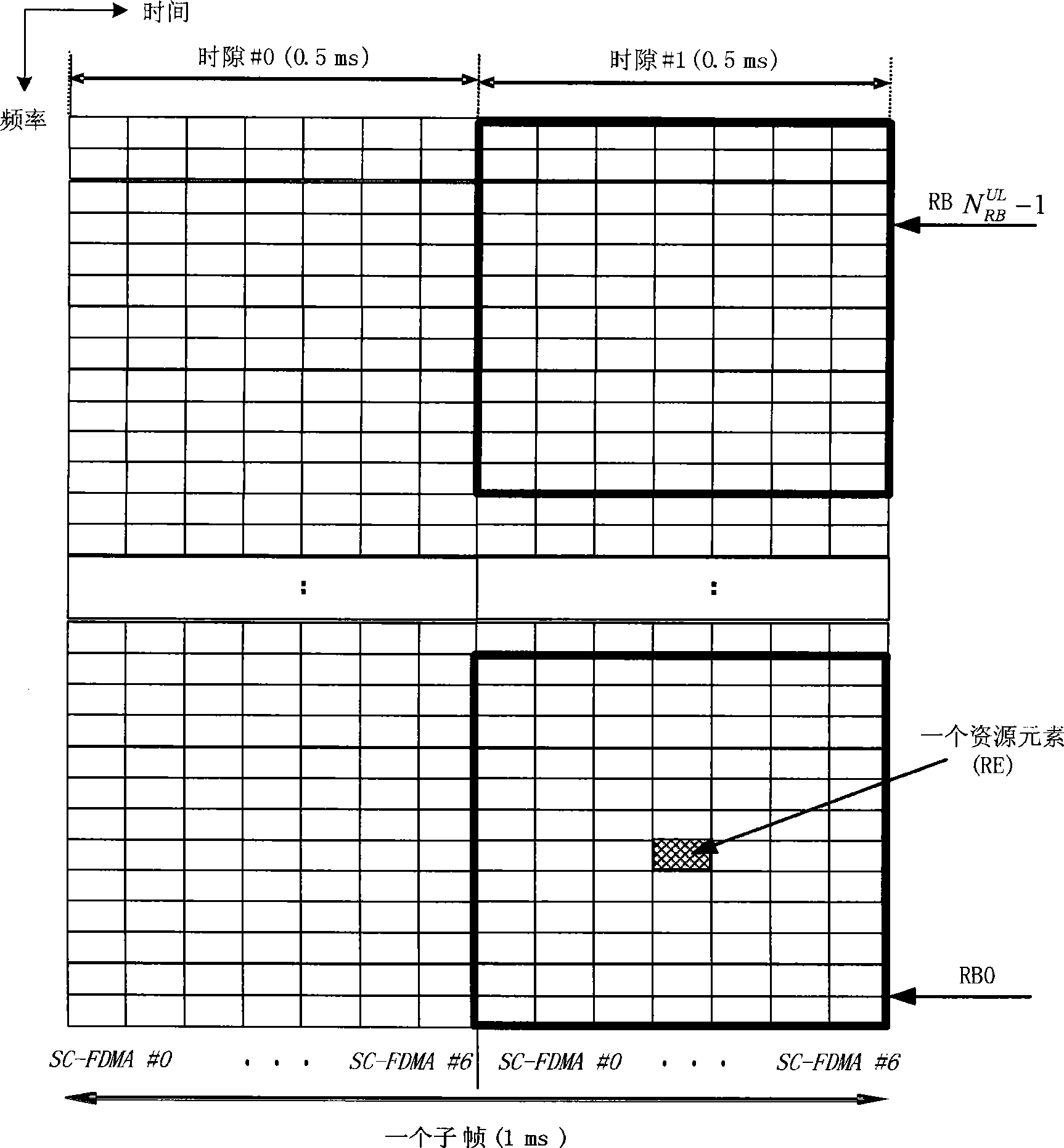Method for completing random access response transmission in radio communication system and base station
A random access response, wireless communication system technology, applied in the field of communication, to reduce waste of resources and improve utilization
- Summary
- Abstract
- Description
- Claims
- Application Information
AI Technical Summary
Problems solved by technology
Method used
Image
Examples
Embodiment 1
[0051] Such as Figure 5 As shown, it is assumed that in the FDD mode of the LTE-A system, there are two downlink component carriers, and the bandwidth of each downlink component carrier is 20 MHz. In the figure, the blank filled part of the downlink component carrier indicates the synchronization channel, the vertical line filled part indicates the broadcast channel, and the left oblique line filled part indicates the random access response issued by the base station. There are two uplink component carriers, and the bandwidth of each uplink component carrier is 20MHz.
[0052] The broadcast channel in the downlink component carrier 1 broadcasts the following information (not limited to the following information):
[0053] 1) Frequency location information and bandwidth of uplink component carrier 1.
[0054] 2) Configuration parameters of the physical random access channel on the uplink component carrier 1.
[0055] Among them, the configuration parameter of some specific ...
Embodiment 2
[0063] Such as Figure 6 As shown, it is assumed that in the FDD mode of the LTE-A system, there are five downlink component carriers, and the bandwidth of each downlink component carrier is 20 MHz. In the figure, the blank filled part of the downlink component carrier indicates the synchronization channel, the vertical line filled part indicates the broadcast channel, and the left oblique line filled part indicates the random access response issued by the base station. There are two uplink component carriers, and the bandwidth of each uplink component carrier is 20MHz.
[0064] The broadcast channels in downlink component carriers 1, 2, and 3 broadcast the following information (not limited to the following information):
[0065] 1) Frequency location information and bandwidth of uplink component carrier 1;
[0066] 2) Configuration parameters of the physical random access channel on the uplink component carrier 1, wherein:
[0067] Some specific physical random access cha...
Embodiment 3
[0077] Such as Figure 7 As shown, it is assumed that in the FDD mode of the LTE-A system, there are five downlink component carriers, and the bandwidth of each downlink component carrier is 20 MHz. In the figure, the blank filled part of the downlink component carrier indicates the synchronization channel, the vertical line filled part indicates the broadcast channel, and the left oblique line filled part indicates the random access response issued by the base station. There are two uplink component carriers, and the bandwidth of each uplink component carrier is 20MHz.
[0078] The broadcast channels in downlink component carriers 1, 2, and 3 broadcast the following information (not limited to the following information):
[0079] 1) Frequency location information and bandwidth of uplink component carrier 1.
[0080] 2) Configuration parameters of the physical random access channel on the uplink component carrier 1.
[0081] Among them: some specific physical random access ...
PUM
 Login to View More
Login to View More Abstract
Description
Claims
Application Information
 Login to View More
Login to View More - R&D
- Intellectual Property
- Life Sciences
- Materials
- Tech Scout
- Unparalleled Data Quality
- Higher Quality Content
- 60% Fewer Hallucinations
Browse by: Latest US Patents, China's latest patents, Technical Efficacy Thesaurus, Application Domain, Technology Topic, Popular Technical Reports.
© 2025 PatSnap. All rights reserved.Legal|Privacy policy|Modern Slavery Act Transparency Statement|Sitemap|About US| Contact US: help@patsnap.com



